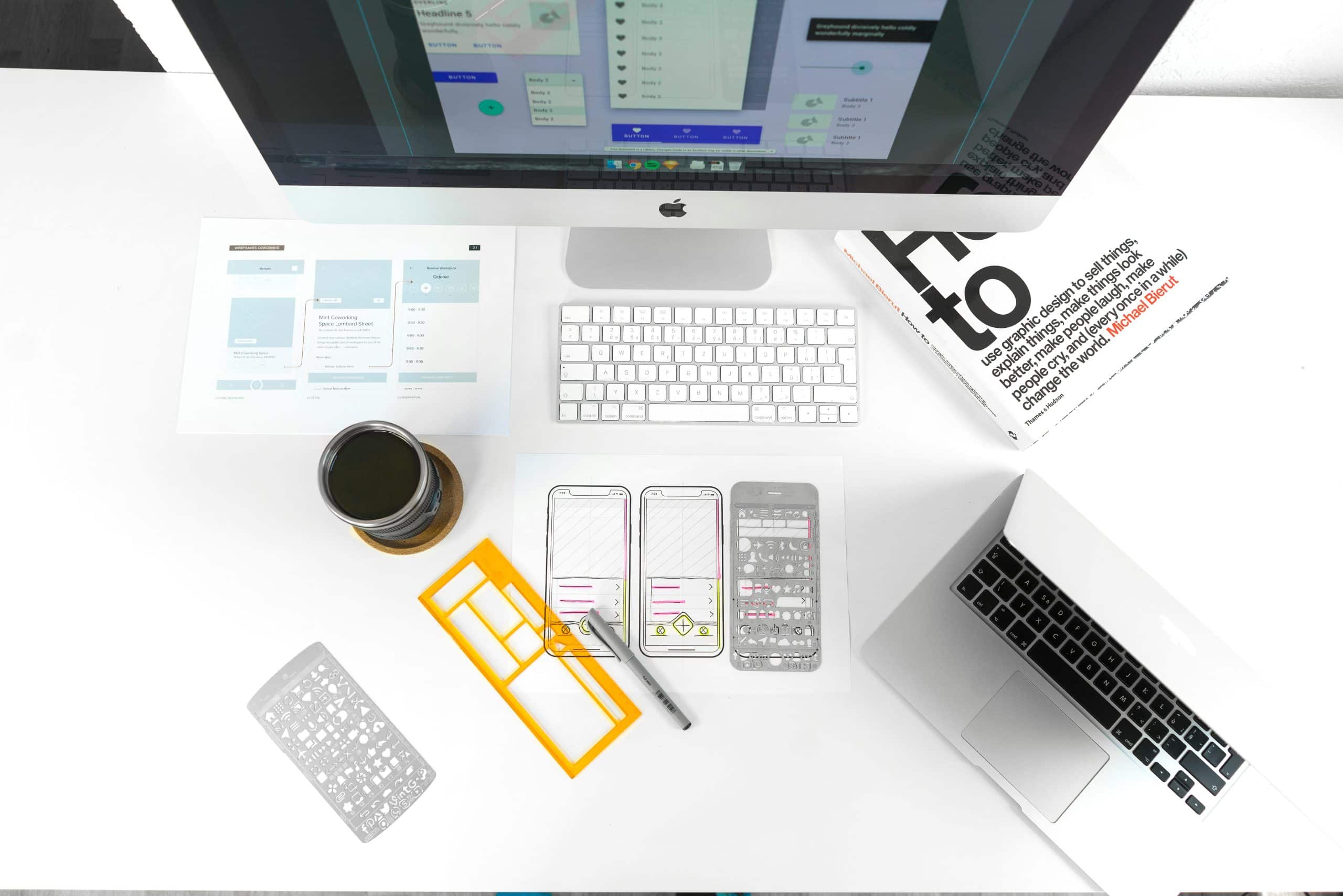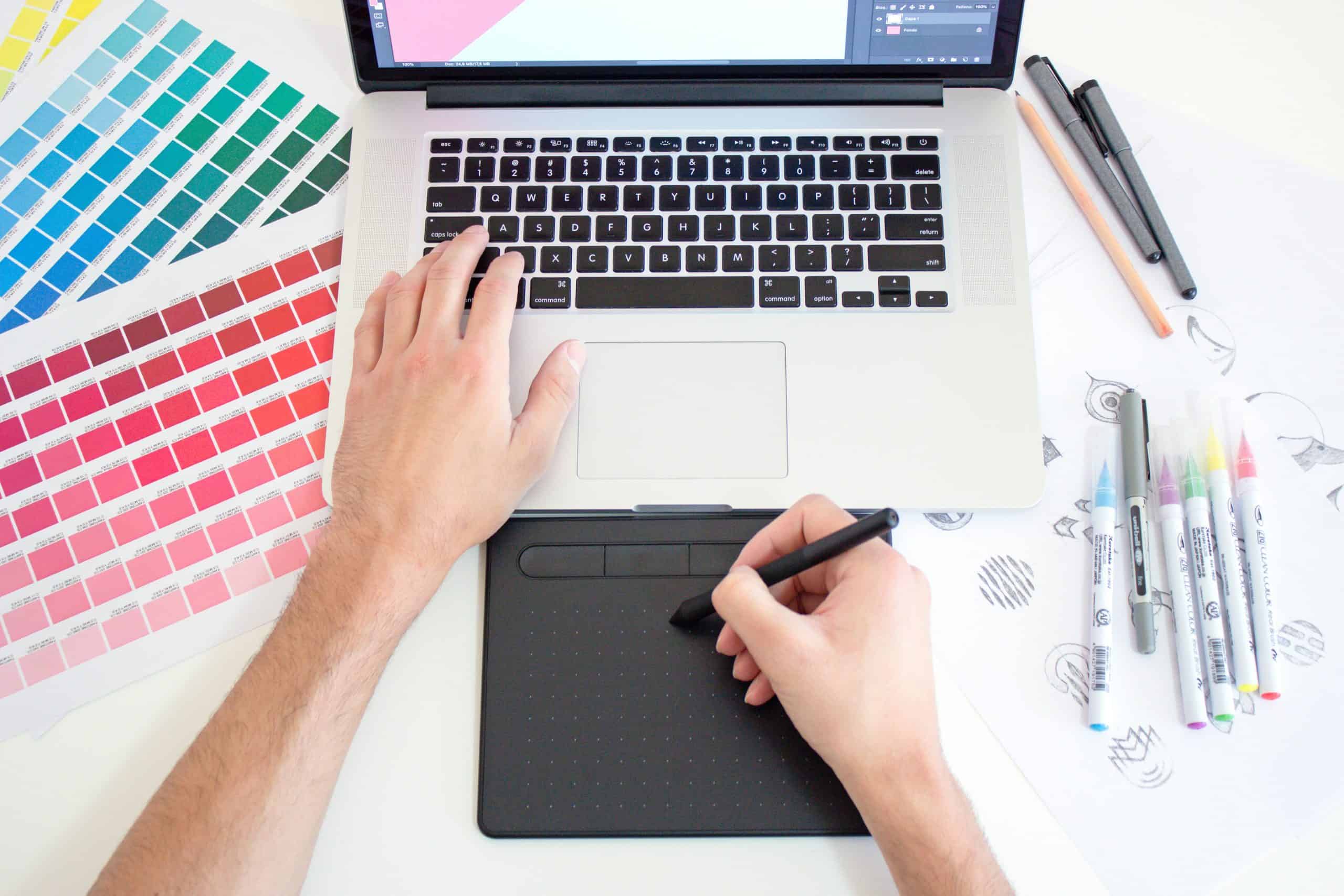Minimalist design has become increasingly prevalent in branding, and for good reason. With its clean, simple, and visually appealing aesthetics, minimalist design offers numerous benefits that can greatly enhance the effectiveness of a brand’s identity. You can opt to hire a UI designer to help you build a minimal and engaging design for your website.
The aim of this article is to outline the key benefits of using minimalist design in your branding and also to provide practical tips that will help you integrate minimalist design into your own branding.
The key benefits of using minimalist design in your branding…

Clarity
One of the key elements of minimalist design is its emphasis on simplicity and clarity. By eliminating unnecessary elements and visual clutter, minimalist designs create a clean and focused visual language that effectively communicates a brand’s message. This clarity allows the audience to grasp the main points and focus of the brand, making it more memorable and impactful.
Relevance
Minimalist design is often associated with modern and trendy aesthetics. With its clean lines, geometric shapes, and minimal use of colours and textures, it can create a contemporary and visually appealing visual identity. This can help a brand stay relevant and appealing to the evolving tastes and preferences of its target demographic.
Versatility
While trends may come and go, minimalist design remains timeless and versatile. Its simplicity allows it to adapt to various contexts and mediums while still maintaining its identity and coherence. Whether it’s on a business card, a website, or a large-scale advertising campaign, minimalist design can adapt and evolve without compromising its visual appeal.
Consistency
Maintaining consistent branding is crucial for brand recognition and recall. Minimalist design offers an excellent way to ensure brand consistency across different platforms. By sticking to a clean and minimalist aesthetic, a brand can ensure that all its visual elements – including logos, typography, colours, and imagery – remain harmonious and cohesive. This consistency of design helps to establish a strong brand identity and build brand recognition.
Simplicity
Minimalist design often requires meticulous attention to detail. By reducing design elements to their simplest forms, designers are forced to carefully consider every decision and element. This attention to every detail can result in a visually stunning and well-crafted brand identity that exudes professionalism and attention to detail.
User-experience
Minimalist design is not only visually appealing; it also enhances the user experience. By eliminating distractions and clutter, minimalist designs create clean and user-friendly interfaces. This simplicity allows users to navigate the website and consume information with ease. It not only reduces cognitive load but also increases user engagement and satisfaction.
Scalability
Minimalist design is inherently flexible and scalable. It can be easily adjusted and adapted to accommodate different contexts and applications. Whether it’s a small logo or a large-scale advertising campaign, minimalist design remains consistent and visually appealing. This flexibility and scalability make it an ideal choice for brands looking to expand their reach and adapt to new markets or platforms.
As you can see minimalist design offers a wide range of benefits in branding. Its simplicity, modernity, versatility, and attention to both visual and user experience make it a powerful tool for creating a lasting impact and establishing a strong brand identity. By embracing minimalist design, brands can effectively communicate their message, stay relevant, and create a visually appealing and timeless brand experience.
Minimalist design has become a popular trend in branding, as businesses look for a clean and modern aesthetic. By emphasising simplicity, clarity, and functionality, minimalist branding can help create a strong and memorable visual identity.

Here are nine ways to use minimalist design in your branding…
1. Clean and Simple Logo
A minimalist logo design can be a powerful tool in branding. By stripping away unnecessary details and clutter, a minimalist logo can be effortlessly recognizable and memorable. Consider using geometric shapes, clean lines, and negative space to create a logo that conveys your brand’s values.
2. Minimalist Website Design
A minimalist website design is visually appealing and easy to navigate. By paring down the amount of content and visual elements, it can create a clean and focused user experience. Use white space effectively, limit the use of colour, and focus on typography to create a clean and modern website.
3. Minimal and Effective Typography
Typography can play a significant role in minimalist branding. Choose clean, modern fonts that complement your brand’s overall style. Pay attention to spacing, alignment, and legibility to create a visually stunning and easy-to-read design.
4. Streamlined Visual Identity
Minimalist branding involves creating a consistent and cohesive visual identity across various platforms. Use a minimalist colour palette, apply the same design principles to marketing materials, and incorporate visual elements such as patterns, textures, and icons that align with your brand’s identity.
5. Minimalist Packaging
Minimalist packaging can be visually appealing and eye-catching. Use simple and clean lines, limited colour palettes, and typography that reflects your brand’s identity. Consider using eco-friendly materials whenever possible to create a sustainable and socially responsible packaging design.
6. Minimalist Social Media Graphics
Minimalist design can also be applied to social media graphics. Use solid colours, clean lines, and minimal text to make your content stand out. Experiment with different aspect ratios and sizes to ensure that your graphics are visually appealing and engaging on different social media platforms.
7. Minimalist Marketing Materials
Apply minimalist design principles to your marketing materials, such as business cards, brochures, and flyers. Use high-quality paper stock, clean typography, and minimal graphical elements to create a professional and polished look.
8. Minimalist Branding Guidelines
Establish clear branding guidelines that outline how your brand elements should be used and maintained. This includes the colour palette, typography, logo usage, and any additional design elements that contribute to your minimalist brand identity.
9. Minimalist Branding Strategy
Develop a minimalist branding strategy that aligns with your brand’s values. Consider your target audience, brand message, and objectives when creating a minimalist branding experience. Prioritise simplicity and clarity to ensure that your branding effectively communicates your brand’s message.
Minimalist design can be a powerful tool in branding, helping to create a modern and visually appealing identity. By embracing simplicity, clarity, and functionality, you can create a strong and memorable brand that resonates with your target audience. Remember that the key to successful minimalist design is to communicate your brand’s message effectively while maintaining a clean and uncluttered aesthetic. Consistency in design elements and simplicity in presentation contribute to a memorable and impactful minimalist brand identity.